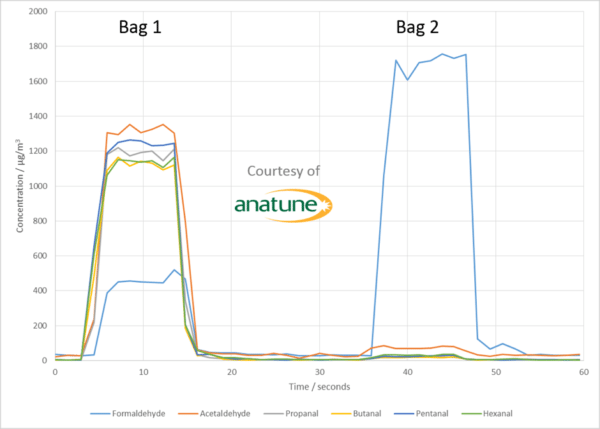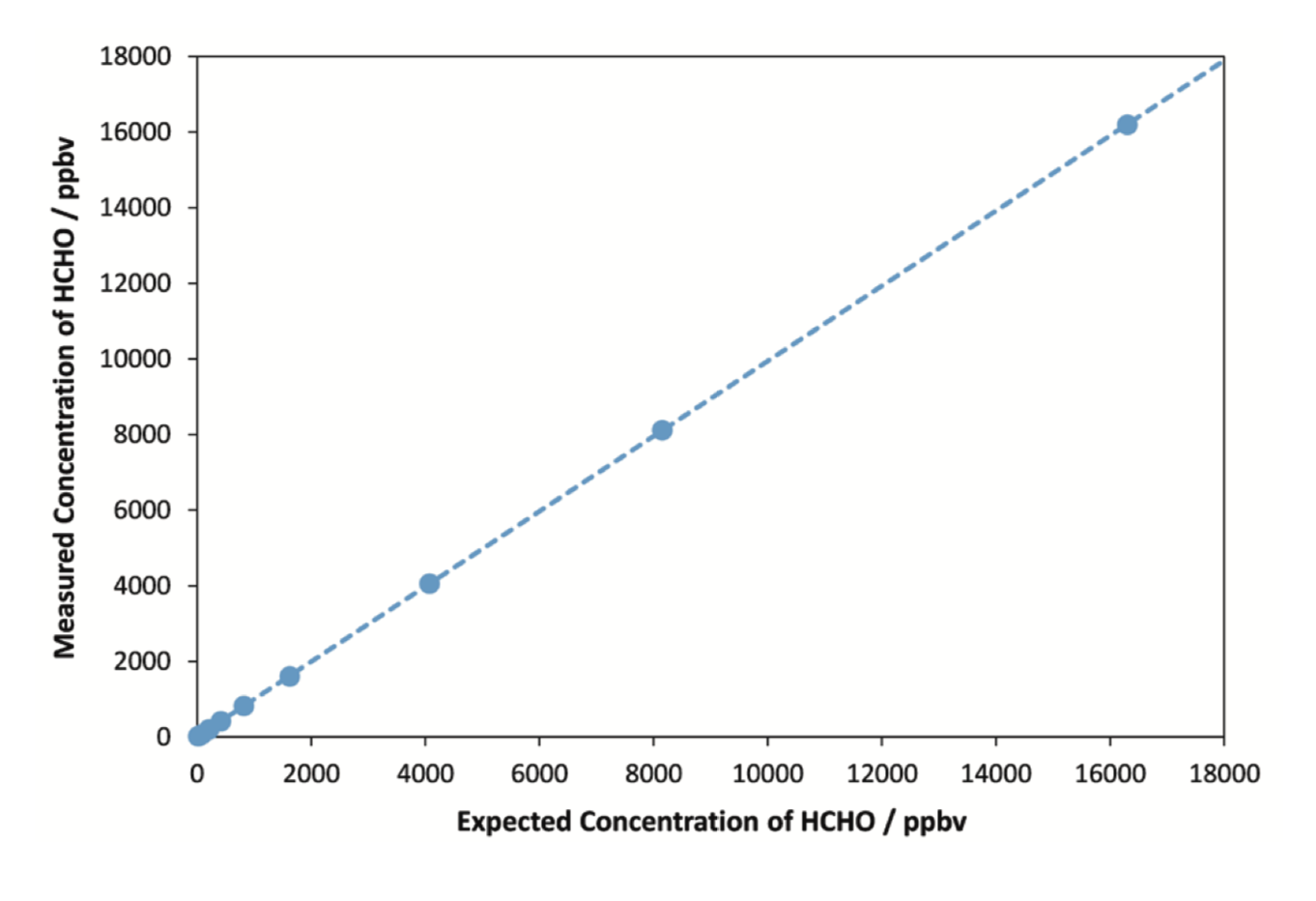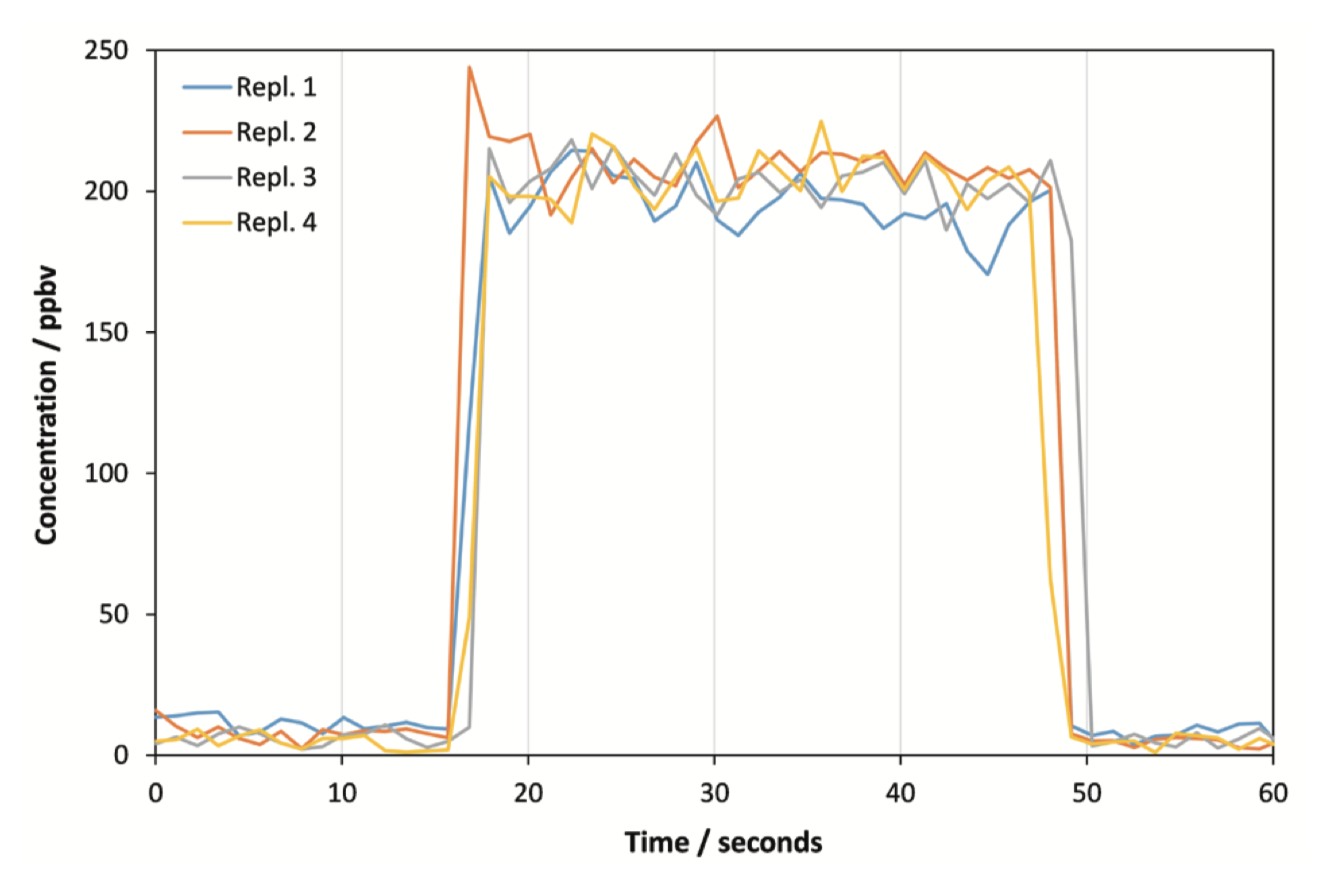SIFT-MS revolutionizes formaldehyde analysis by applying ultra-soft chemical ionization (USCI). SIFT-MS eliminates chromatography and directly analyzes formaldehyde in the air to sub-part-per-billion concentrations (ppbV) within seconds, from only a few milliliters of air.
Formaldehyde: A ubiquitous and hazardous compound
Large quantities of formaldehyde are produced in the United States each year, with 4.5 million metric tons produced in 2006 [1]. The United States’ Environmental Protection Agency provides a succinct description of its widespread use and anthropogenic sources:
"Formaldehyde is present in a wide variety of products including some plywood adhesives, abrasive materials, insulation, insecticides and embalming fluids. The major sources of anthropogenic emissions of formaldehyde are motor vehicle exhaust, power plants, manufacturing plants that produce or use formaldehyde or substances that contain it (i.e. glues), petroleum refineries, coking operations, incinerating, wood burning and tobacco smoke."
The toxicity, carcinogenicity and ubiquity of formaldehyde necessitate detection at trace levels across diverse applications, including pharmaceutical testing, automotive emissions, and ambient and indoor air quality. Formaldehyde is, however, difficult to analyze to trace levels using gas chromatography (GC) and liquid chromatography (LC). GC and LC usually require sampling large gas volumes to achieve low detection limits, followed by derivatization to enable analysis of this highly polar, reactive compound.
Widespread usage, plus its formation as a byproduct of combustion and various industrial processes, mean that formaldehyde significantly impacts air quality in workplaces, homes and the environment.
Much has been written on formaldehyde’s role in photochemical smog formation and its carcinogenic properties, particularly since the U.S. Department of Health and Human Services identified it as a known human carcinogen. The combined effects of these concerns and formaldehyde’s ubiquitous presence has focused attention on air quality in homes, workplaces and the environment.
By contrast, SIFT-MS analyzes directly from air or headspace using very soft chemical ionization, down to sub-part-per-billion-by-volume (ppbV) concentrations within seconds. The graph below shows automated SIFT-MS analysis of two Tedlar bag samples containing formaldehyde and the five linear C2 – C6 saturated aldehydes within one minute. Using HPLC with UV detection, analysis of these samples would take about 25 minutes - and that does not include time for sampling onto DNPH tubes and subsequent solvent extraction.

Figure 1. Automated SIFT-MS analysis of two Tedlar bag samples containing formaldehyde and the five linear C2 – C6 saturated aldehydes within one minute
Real-time formaldehyde monitoring with SIFT-MS
SIFT-MS analyzes formaldehyde directly and instantly to sub-part-per-billion (ppbV) concentrations. No sample prep or preconcentration is required. The formaldehyde data shown here were obtained using a Syft Technologies Voice200ultra SIFT-MS instrument integrated with a GERSTEL Multipurpose Sampler (MPS) (GERSTEL, Mülheim an der Ruhr, Germany). Sampling from Tedlar gas sample bags (SKC, Eighty-Four, PA, USA) was achieved using the GERSTEL sample bag analysis accessory.
SIFT-MS has a linearity range that typically extends six orders of magnitude, with detection limits in the low part-per-trillion (pptV) concentration range. Figure 2 shows linear detection of formaldehyde from very low ppbV to mid-part-per-million (ppmV) concentrations, without requiring any preconcentration or sample dilution. This concentration range covers the needs of most applications in the pharma, automotive and environmental industries.

Figure 2. SIFT-MS linearity for formaldehyde analysis across the ppbV to ppmV range.
Formaldehyde analysis using SIFT-MS is highly repeatable. Figure 3 shows four replicate injections of a 200-ppbV formaldehyde gas standard, taken from a Tedlar sampling bag. The mean concentration reading was 203 ppbV (2.6 % RSD).
Direct analysis of formaldehyde in air is straightforward using SIFT-MS. By eliminating chromatography, 25-fold sample-throughput enhancements can be achieved with SIFT-MS compared to standard LC.

Figure 3. Rapid, replicate analyses of formaldehyde direct from a Tedlar sample bag, using automated SIFT-MS.
References:
[1] Bizzari SN. 2007. Formaldehyde. In Chemical Economics Handbook. Menlo Park, CA: SRI Consulting. Online edition. 106 pp.
